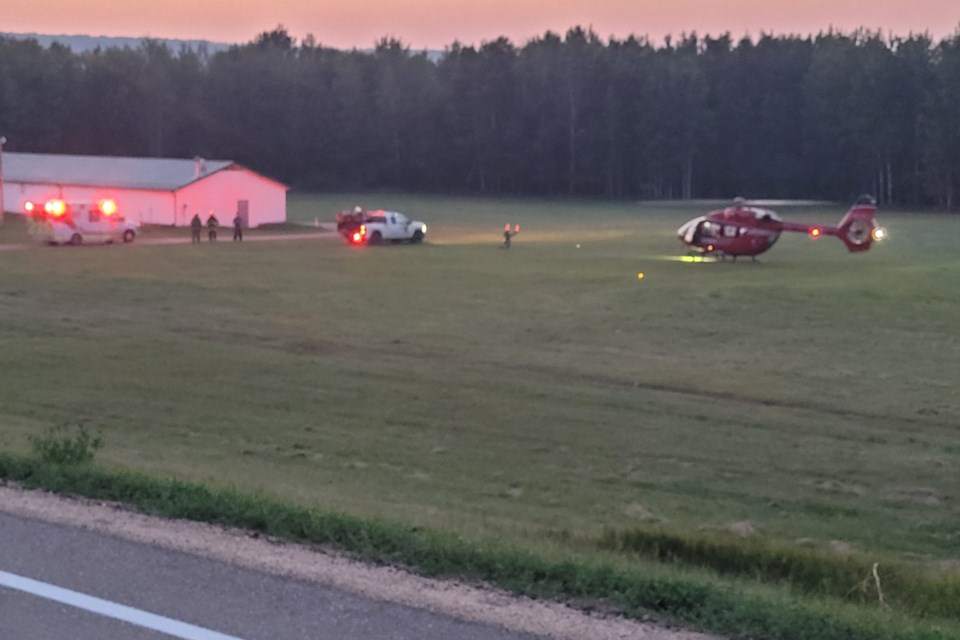ATHABASCA — Hearing the woomp, woomp, woomp of a helicopter circling overhead can be thrilling, but if it’s the familiar, red STARS helicopter, it can strike feelings of both worry and relief.
A motor vehicle accident Aug. 22 in Colinton, south of the Town of Athabasca was near an open field so an impromptu landing area was easy to manage but what if that isn’t always the case?
“In the bush we start grabbing chainsaws and cutting trees down to make a landing zone,” said interim Athabasca County fire coordinator Brad Straty in an Aug. 25 interview.
If there is a hill, then first responders have to find a flat place.
“We put a bunch of guys through their STARS training in February 2020,” he said.
Typically, when an emergency occurs, the call comes into 911, then local ground ambulance and first responders are dispatched. If STARS is needed for a critical situation, they are guided by local fire department members as they get close to the site.
“Yep, so it's radio contact with STARS; we talk with them,” Straty said. "What they'll usually do is make their own flight around the site to make sure everything is safe for them and then they'll come down. And if the pilot isn't comfortable, then he'll do his own thing and find his own spot.”
And while STARS is prepared to fly at night with night vision technology, the fire department still ensures they stay safe.
“If hazards are there like power lines, we’ll put vehicles in line with the power lines and shine our lights down the power line, so they know to stay away from that area,” he said.
And if STARS can’t get close enough to land, the fire department will help extricate the person or people to an ambulance who will then transport them to the landing area.
“We’d carry them out of the bush or what have you (but) we don’t transport, so it would be the ambulance who does that,” said director of agriculture and community services Dawn Phillips. Athabasca County Fire Services fall under that department as a community service.
There are landing pads by the healthcare centres in Barrhead, Westlock, and Boyle but the Town of Athabasca uses the one at the airport east of town.
“It would make sense that they land at the airport because ... we are just on the edge of their flight zone so a lot of times they'd have to land at the airport to fuel up to go back,” Straty said.
STARS (Shock Trauma Air Rescue Service) isn’t the only air rescue in the province though either. Fort McMurray has HERO (Helicopter Emergency Rescue Operation) and Medicine Hat has HALO (Helicopter Air Lift Operation), both of which received provincial funding for the first time this year.
“The province actually started funding the other two helicopter services as well, because they see the need for them,” said Straty, who had just returned from attending an accident on Highway 63 near Wandering River.
“That's a long way up. I feel a lot of compassion for the people that have an accident on Highway 63 because they're gonna wait a long time,” he said. “Even with Wandering River being where they are, it's a long run.”



